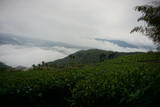Book of Maps

Recently, I’ve been starting the day with live tea sessions on Instagram. If you have time and want to be social on social media, tune in. Sometimes I post these to our IGTV, where they are immortalized for your leisurely consumption.
One general theme of these sessions is the adventure of trying to find really good tea. In Taiwan, tea is everywhere, but really, really good tea is harder to come by. I’ve been collecting really good tea for a number of years, and because of this, we have a collection of amazing tea. Some of the tea is so good that I haven’t even released it for sale. These are teas that I think of in a different way. They are not tea for business. They are teas that I return to every once in a while to remind myself about how good tea can be. But enough bragging. I know you don’t care how good our tea is or how good I think it is. I am here to let you know about some of the bone- crushing adventures that it took to find these teas.
I found a large and thick book in Taiwan that was a map of every road in Taiwan. I wish I still had it, though it is most likely outdated by this time. It was with this book, my dog, Boo, and some camping gear that I headed into the mountains on my scooter for some tea, some camping, and a whole lot of adventure. One thing that isn’t really advertised about riding scooters for hours on end is that it sucks. The aches start in the lower back and then spread to the shoulders, arms, and neck, and eventually take hold and threaten to lock the body into place. At least that’s how it feels as the scooter accelerates through curve after winding curve, occasionally dodging blue trucks when we are on one lane roads. On the one lane roads, the fatigue loses its edge because the terrain is so interesting and the scenery so beautiful, but each bump in the road, mixed in with all of those vibrations add up. Until finally, I have to stop to rest.
But even stopping and resting somehow doesn’t recharge the battery, it only suspends the obvious negative pull. There are no roadside restaurants. I am carrying roadside snacks of sugarcane and water, and I can only eat so much sugarcane.
Some of these farms are hard to find. And I have a few points I am trying to get to. But after not long, I realize that most of the action is on very small one lane roads. Which is a blessing and a curse. It is remote, and there is hardly any traffic. But one truck barrelling down these one lane roads that have no shoulder can be terrifying and even lethal. Even these tiny roads are listed in my book, usually as a numerical code. Many of them are very hard to find, because they don’t always list the code at the start of the road.
I’ve found a man in his 60s and I ask him the way. He points me back to the main road. I am used to this. I’m in an area where, “the bird’s don’t lay eggs, and the dogs don’t take dumps.” This is the Mandarin equivalent of the middle-of-nowhere. I’m clearly an outsider. It looks like it will be up to me to find my own way. And I do, and it builds character, or at least that is what I tell myself.
My dog, Boo, rides standing on the scooter’s floorboard. My legs are therefore flared outward to create room. His toe pads hang off the edge of the scooter and he kicks at my embracing legs. All of this makes me nervous, but the dog seems to have a superior ability to stay put. After many hours of riding though, we have a new danger: he seems to be falling asleep while standing. It is time to rest, so I find a dirt road and after a short climb and a pull off, I find a man working, cutting down sorghum. “Is it ok to set my tent up here?” I ask. He replied, “Who is going to tell you you can’t put up your tent here?” This was the only thing he said to me.
